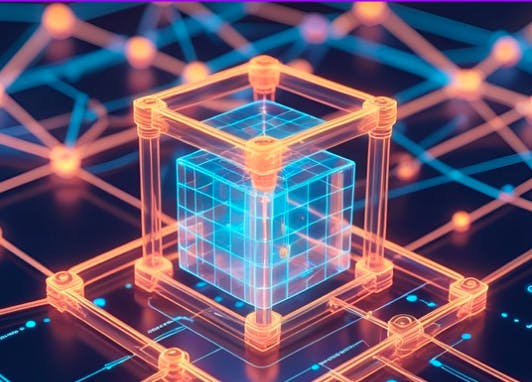The Apocalypse No One Invited
Imagine this: Wednesday morning of Q3. Somewhere else in North America, a multinational beverage company's logistics dashboard shows that everything is groovy. Their inventory is in balance, their assembly lines are running at full speed, and their digital twin is happily predicting zero disruptions for the next six months.
Three ports are offline by Friday due to extreme weather, truck capacity in two critical states has disappeared, and a critical ingredient is stuck halfway across the country. The digital twin? Still showing all systems go.
This isn't theory. It's a repeated experience for firms that have invested millions creating supply chain models, only to discover that their twins are perfect in theory but breakable in practice. The gap between the model and the world is where the apocalypse starts, and it's bigger than executives want to admit.
Why Your Digital Twin Is a Fragile Replica
In theory, a digital twin ought to be the ultimate insurance policy: an end-to-end replica of your supply chain in near-real-time that can forecast, stress-test, and optimize before disaster hits. But most are built like film sets that are photo-realistic. They look real to view from the front, but there is a shell behind the facade of outdated assumptions and fragmented information.
The problems run deep. Dependencies are modeled like columns in a spreadsheet, ignoring the messy, indirect dependencies that cause chain reactions in the world at large. ERP, planning, logistics, and supplier systems can pass files back and forth, but file-passing is not quite real, semantic integration. And when a new supplier, product, or disruption comes along, weeks of developer sprints and middleware patching are required to keep the system from crashing over.
It's similar to having a flight simulator that can perfectly replicate sunny conditions but crashes as soon as you add turbulence.
Graph Thinking: The Missing Link in the Twin's DNA
That's where graphs come in, not in addition to your ERP or planning software, but as the cement your digital twin has been missing.
Graph structures work best to describe relationships. Every supplier, warehouse, port, and truck is a node. Every link, including shipping route, shared supplier, or regulatory constraint, is an edge. This enables you to track direct connections and even the web of indirect dependencies that actually constitute real-world risk.
While linear models require months of redo ETL to bring in new data sources, graphs can execute recursive queries uncovering danger lurking several layers in and simulate the ripple effect of disruptions via interconnected nodes.
Example in Neo4j Cypher:
MATCH (p:Port {name: "Port of Los Angeles"})<-[:SHIPS_THROUGH]-(s:Supplier)
MATCH path = (s)-[:SUPPLIES_TO*1.3]->(f:Factory)
RETURN DISTINCT f.name, LENGTH(path) AS hops
This modest question displays all factories impacted in three tiers of a disrupted port, transparency that no ERP-generated reports ever will.
In my own experience managing 40+ SAP ↔ Blue Yonder integrations with BY Connect and SAP PI, this kind of mapping is not a nice-to-have; it's survivable.
Layering Graphs Over the Old Guard (SAP ↔ Blue Yonder)
The beauty of graph-based is that you do not have to take out your existing systems to get started. In a well-established SAP–BY environment, it works like this:
- Transactional data from SAP S/4HANA and planning outcomes from BY are streamed into the graph model in near real-time.
- Suppliers, SKUs, transport routes, facilities, and risk drivers like tariff exposure or carbon footprint are encoded as nodes.
- Edges between them specify relationships, enriched with properties like lead times and capacity limits.
There, you can perform "what-if" simulations: a port closure, a regulatory change, or an unforeseen surge in demand. The graph model calculates the cascading effects and feeds the results into BY for re-forecasting and scenario planning.
Performance tuning is critical. The experience of optimizing CTRL-M batch runs and UI responsiveness are experiences which directly translate to graph query optimization. Disruption management speed is not an option, but the entire concept.
Cascading Failure Detection in Action
Consider the example of an unexpected failure by a Tier-2 Southeast Asian supplier. A graph model can automatically:
- Look upstream to identify all the raw materials sourced by that supplier
- Look downstream to know how those production lines and customer orders are threatened
- Estimate the potential revenue loss and lead time slipping
It would take days in a traditional system, but an optimized property graph can do it in seconds. Speed gives companies the choice to act before the first domino drops.
Apocalypse Avoidance: The Payoff of Graph-Based Twins
The supply chain apocalypse is not a single catastrophic collapse. It's usually a string of little ones that snowball and wreak havoc. Graph-based twins excel at catching these patterns early so that decision-makers can step in.
The benefits are tangible:
- Feel disruption before it reaches the tipping point
- Model eco-efficient routes of transportation without interrupting operations
- Flip to backup sourcing or distribution strategies in hours instead of weeks
Your twin is no longer a still photo but a dynamic decision-making machine.
If your digital twin cannot analyze multi-tier disruptions, it's not finished. Graph databases can integrate with your existing ERP and planning stack and provide the network-aware intelligence your existing infrastructure does not possess. Performance tuning is just as vital here as it is in transactional systems, and enabling simulation of indirect dependencies is no longer a nicety, but a competitive imperative.
Redraw the Map Before It Burns
Digital twins are not broken, they're incomplete. Without a graph-aware layer, they'll disappoint you precisely when you need them the most.
The apocalypse is not necessarily avoidable, but it is definitely predictable. And predictability is the best predictor of prevention.
In supply chains, as in life, the shortest distance between two points isn't often the one that withstands contact with reality.


